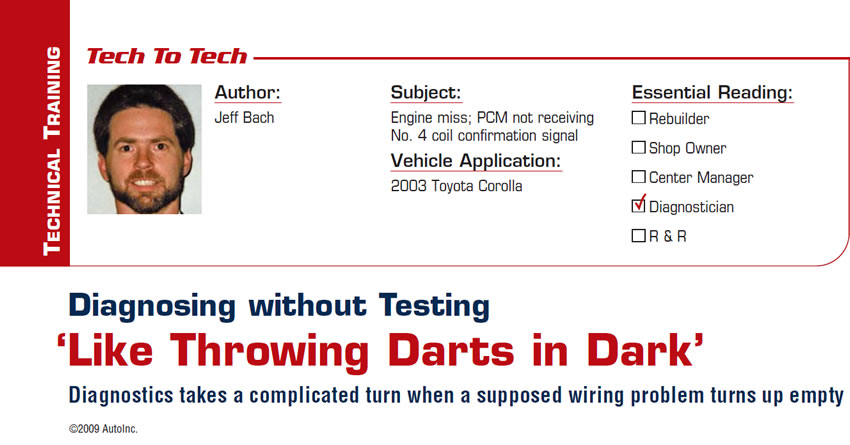Thinking Outside the Box
After the customer left, I hopped into the vehicle and pulled it up in a bay, noticing that the speedo cluster’s odometer was not lit up, nor was the speedo working. I grabbed a scan tool, and, sure enough, it had a 452 code for loss of speedo signal. I thought blown fuse, because the odometer was not working. I checked the fuse and it was blown.
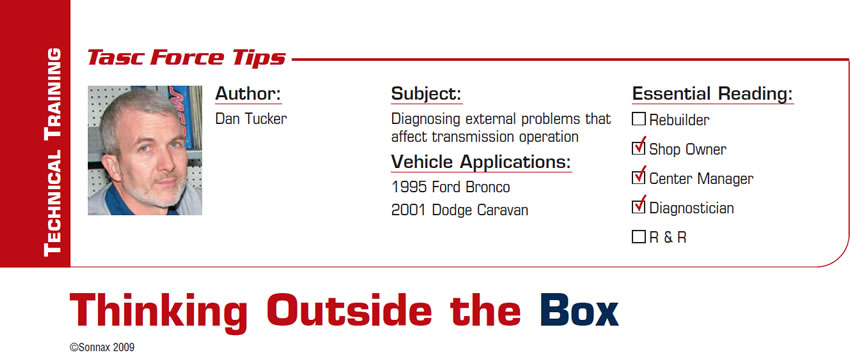
Survival in an Age of Economic and Moral Stress
The lines between dedicated transmission-repair shops and general-repair facilities have become blurred, as trans shops are now doing more general-repair work than in previous times to help cover their overhead and the general-repair shop is now swapping transmissions and other components available through aftermarket rebuilders for the same reasons. It seems that nobody wants to turn away any work that will bring in more cash. This is a natural transition to the change in the repair business that is ongoing but also creates some new problems for suppliers and repair shops.
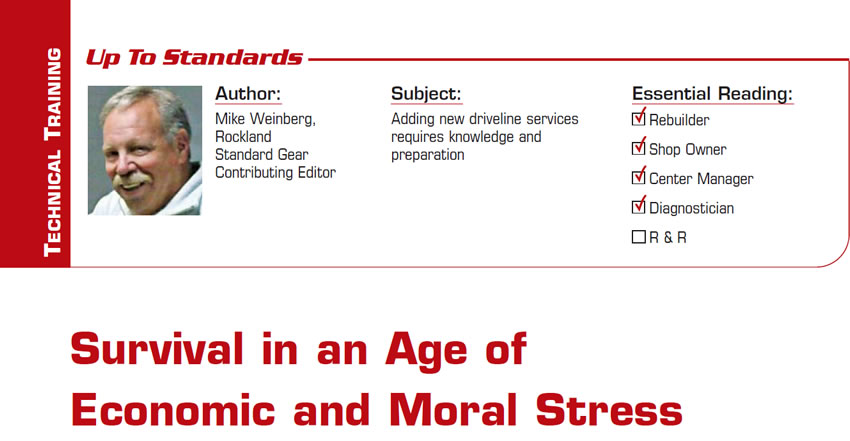
When the Obvious Is not so Obvious
We had a 1995 Ford Super Duty with a 7.3-liter diesel engine and E4OD transmission that had no trouble codes but appeared to be going in and out of TCC lockup at steady cruise speed. If you accelerated hard when this was going on the TCC would engage properly until you came back to cruising speed and there was no more load on the engine. This was a commercial truck that had a heavy air compressor in the back and was always towing a big trailer, so the problem was very noticeable as the truck was being driven.
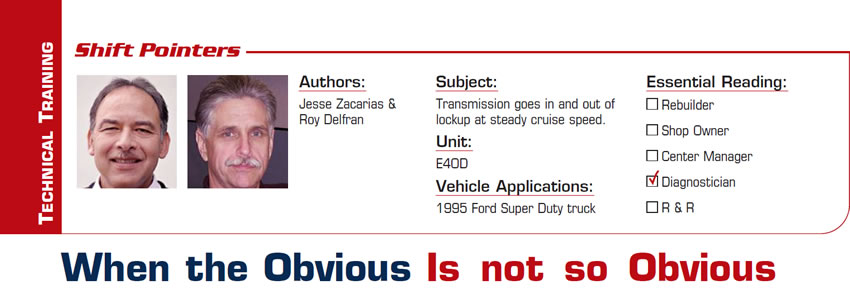
Adventures in engine cooling
The coolant level in the overflow was “full”; however, the level in the radiator was a half gallon low. Even after I topped off the radiator, the engine overheated after running for only 10 minutes. The cooling fan worked, and the temperature of both radiator hoses indicated that the thermostat was wide open. I wondered if there was a circulation issue such as a water pump that decided to fail, or a radiator with internal blockage. The radiator and coolant both seemed clean, and I observed flow when I peered into the radiator neck.
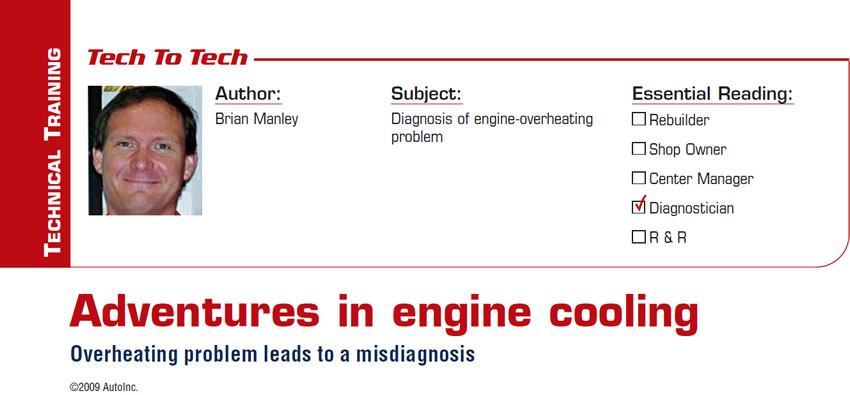
Installer, or Plumber?
Shortly after the installation, the company called our warranty department to report that the transmission was binding in both forward and reverse. It hadn’t been on the road yet because it would barely back out of the bay. They stated that it would roll only a few feet and the transmission would bind to the point of stopping the truck in both forward and reverse. Since our facility that sold the unit was a full-service shop, it was decided that it would be best for the utility company to bring the truck into our shop to diagnose and repair the problem.
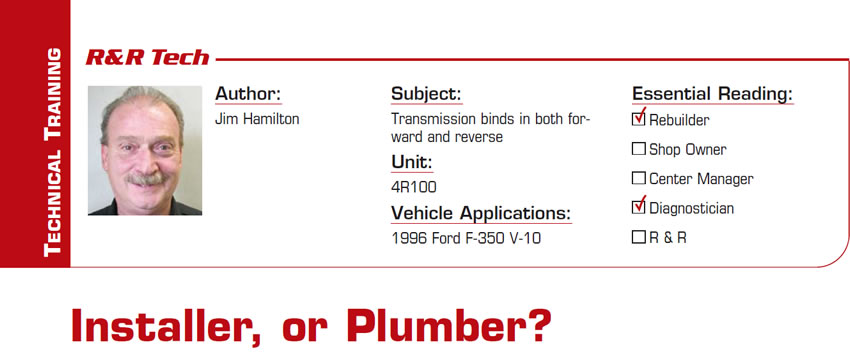
Promoting Trust
The way we sound, look and act along with the way we keep our shops goes a long way toward gaining or losing the trust of our customers. If we present a clean and professional image our customers will be more comfortable and believe that they are going to get a better job, often lowering their resistance to price, making it easier to get the amount we really need.
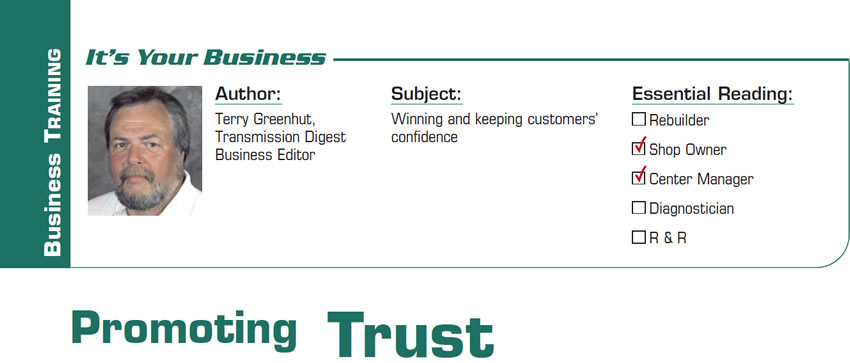
The BorgWarner 4473: Unlocking the Mystery
Through the BorgWarner 4473 transfer case, which is full-time all-wheel drive, there is a 35%/65% constant torque split front to rear. The 4473 is a relatively simple transfer case that uses a viscous coupling to control a planetary differential to split the torque. The planetary uses straight-cut gears for the planet pinions and the sun and annulus gears, which means that there is little or no thrust load on the internal components.
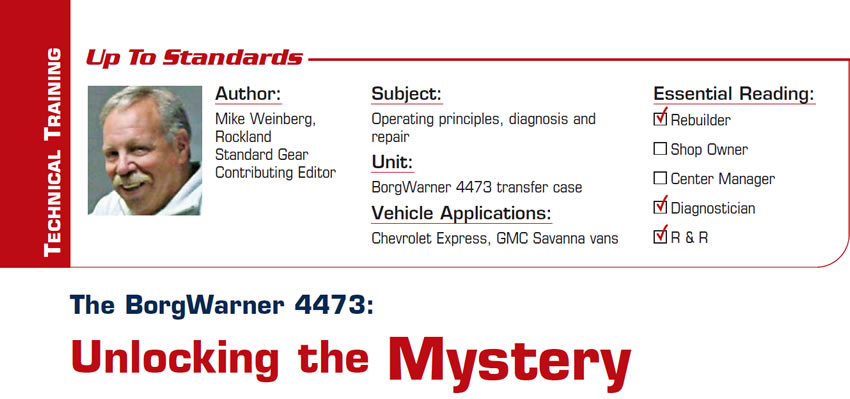
Pay Close Attention to Valve-Body Modifications
This particular call came in just like many others: The technician had already eliminated everything he could interpret as the possible root cause of the concern. The vehicle in question was a 2006 Dodge 2500 pickup with a 5.9-liter diesel and a 48RE transmission. The owner had bought the vehicle recently and had concerns that the transmission was not shifting properly.
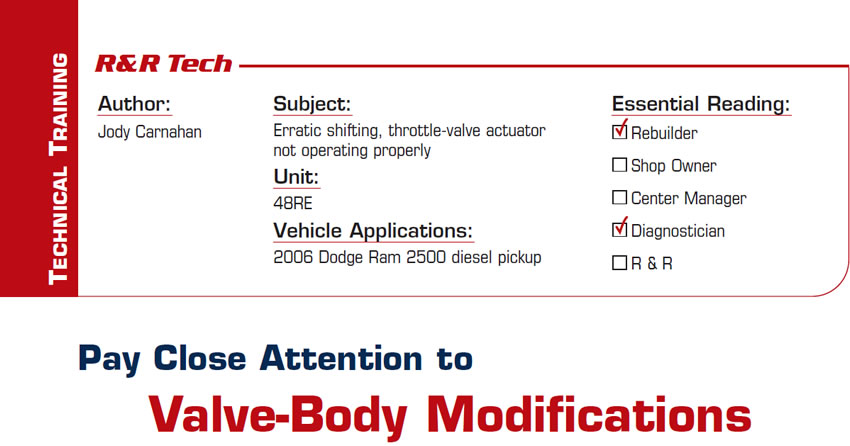
October 2009 Issue
In This Issue
Nissan RE5R05A: First- and Second-Design Valve Bodies
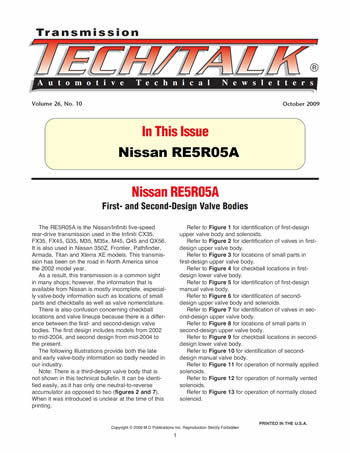
Orifice Control Within the Converter, Part 3
The secondary path of the charge/TCC-release oil is regulated to some degree by transmission parts within the confines of the converter. In some units, the charge oil is regulated by the orifice created between the raised area on the stator shaft (or support) and the impeller hub. In other units, it is regulated by restricting the flow of oil through or around the input-shaft bushing mounted inside the stator support. The Allison 500 series is a unique example because it uses both methods to regulate oil flow, as it both enters and exits the converter.
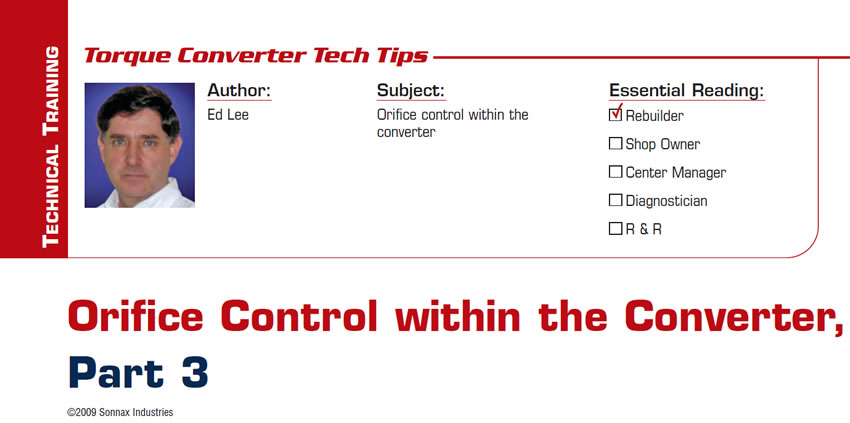
Who’s in Control?
Customers often try to control our pricing by dropping subtle hints or making blatant displays of their mindset as to what they are willing, able or want to pay. Although we shouldn’t, many of us do let it affect the price we quote.
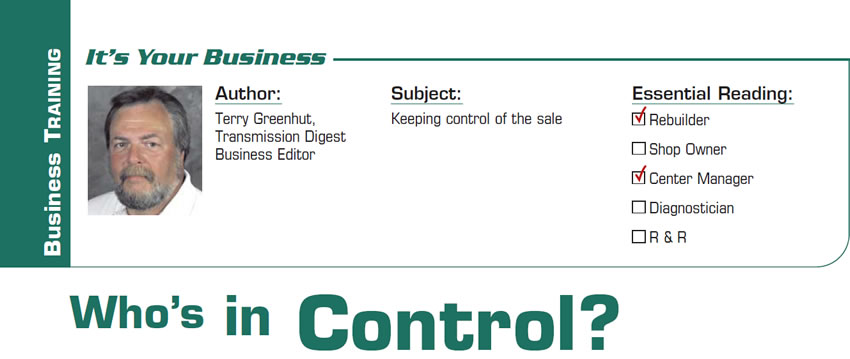
Diagnosing without Testing ‘Like Throwing Darts in Dark’
This particular 2003 Toyota Corolla came to my friend’s shop with a simple miss and a code for the No. 4 coil confirmation signal not being received by the PCM. The first part tried was a coil from the dealer. With the same code coming back and the engine still missing on the same cylinder, more testing revealed that the injector for that cylinder was not operating, and another was substituted. This resulted in no change, and another coil was tried, then switched to another cylinder. Injectors were switched around, and then a PCM was ordered and the car was sent to us for programming. My friend assured me that he wanted nothing further to do with the car and told us to find the problem.
